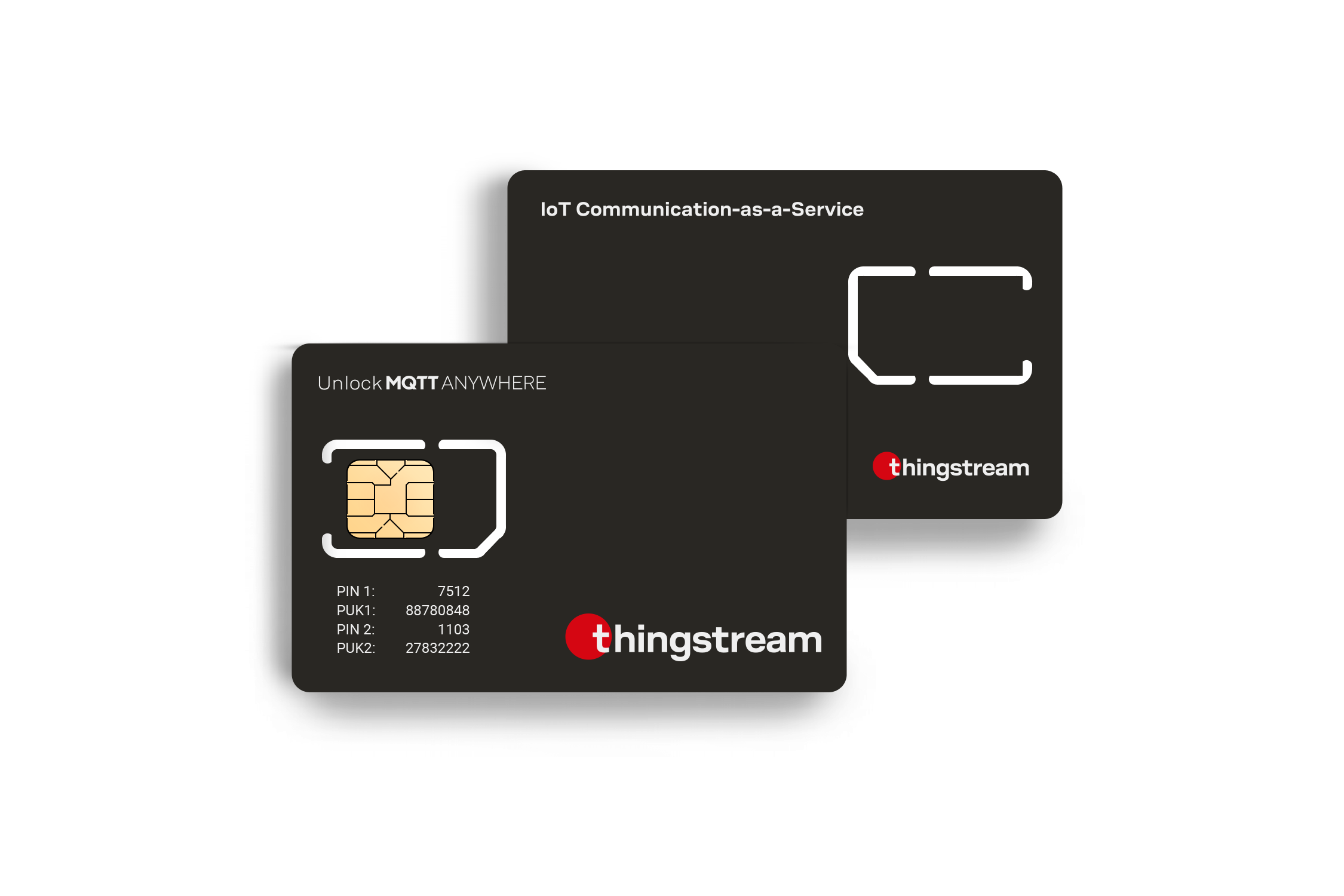IoT Connectivity Technologies Definition of Internet of Things
The evolution of smart homes has transformed the way we interact with our residing areas. At the core of this transformation lies the necessity for efficient IoT connectivity solutions. These solutions integrate various gadgets, enabling seamless communication and automation, making life extra handy and efficient.
IoT, or the Internet of Things, refers to the interconnected network of devices that talk over the web. For smart houses, this means appliances, safety techniques, heating and cooling items, and even lighting could be controlled remotely and work along side one another. Selecting the best IoT connectivity options is thus essential for ensuring optimum efficiency and a cohesive smart house experience.
Managed IoT Connectivity Platform Introduction to IoT Connectivity Options
Firstly, Wi-Fi remains a dominant choice for connecting smart house gadgets. Its widespread availability and compatibility with virtually all smart units make it an accessible option. High-speed web connections enhance the functionality of smart gadgets, allowing them to function smoothly. However, because the number of gadgets in a house increases, competitors for bandwidth may end in connectivity points.
Zigbee is another distinguished connectivity answer, particularly favored for its low energy consumption and mesh networking capabilities. This protocol enables units to communicate with one another directly, enhancing reliability and range. Zigbee gadgets form a mesh community, meaning that they'll relay messages to and from one another. This is particularly helpful for larger houses where Wi-Fi indicators may struggle to cover each area.
Cellular Connectivity Providers For IoT Definition of IoT Connectivity
Z-Wave serves as an alternative selection to Zigbee with related advantages but some distinct differences. Z-Wave’s concentrate on home automation ensures that devices from numerous producers can coalesce right into a unified community. The technology is designed primarily for smart home units, making it extremely specialised. Moreover, whereas Zigbee operates on the 2.4 GHz frequency, Z-Wave utilizes lower frequencies, which may present higher penetration by way of partitions and different obstacles.
Bluetooth is commonly used for short-range device communication. Its low energy consumption is ideal for devices that don't require continuous connectivity. Many smart house products, similar to smart audio system and lights, utilize Bluetooth, permitting for simple pairing and use. However, its limitations in range mean it is typically not suitable as a backbone for a whole smart house system.
LPWAN, brief for Low Power Wide Area Network, caters to units that require long-range communication while consuming less power. Technologies like LoRa and Sigfox fall beneath this category. These networks are notably advantageous for sensors and devices unfold out over large areas. In smart properties, they can be utilized for environmental monitoring techniques that observe temperature, humidity, or air high quality.
Internet Connectivity Principles In IoT Choosing the Right IoT Connectivity
Cellular networks provide an various choice for connecting smart devices, particularly in areas the place Wi-Fi isn’t dependable. Cellular know-how allows devices to attach directly to mobile networks, which may be helpful for houses in remote areas. While typically more expensive than different choices, the reliability and protection of cellular networks make it a worthy consideration.
The integration of multiple connectivity solutions is key for reaching an adaptable smart residence. A hybrid system that combines Wi-Fi, Zigbee, Z-Wave, and Bluetooth can effectively handle numerous needs inside a sensible home. This method ensures that units can talk effectively, no matter their individual necessities or limitations.
Security ought to be a primary concern when deciding on IoT connectivity options. Each protocol comes with its own set of vulnerabilities, and as smart properties turn out to be extra prevalent, the potential for cyber threats will increase. Manufacturers prioritize securing connections through encryption and common updates, but users must additionally take proactive measures, similar to changing default passwords and setting up two-factor authentication.

Interoperability stays a big problem in the space of smart house connectivity. Different manufacturers often use proprietary technologies, leading to compatibility points. Solutions that prioritize open standards are increasingly preferred, as they allow for seamless integration of units from numerous producers. This flexibility allows customers to customise their smart residence techniques with out being locked right into a single model.
IoT Connectivity Solutions Types of IoT Connectivity Options
In addition to enhancing connectivity between units, IoT solutions must also concentrate on person experiences. The management interfaces offered by manufacturers, whether by way of cell apps or net platforms, ought to be intuitive and user-friendly. Consumers should be able to simply manage and automate their devices with out intensive coaching or technical know-how.
Cloud-based solutions are an indispensable part of contemporary smart houses. They provide centralized administration, knowledge analytics, and remote access capabilities. By using cloud companies, users can control their smart properties from anyplace on the earth. This is particularly helpful for safety monitoring and adjusting home settings whereas away, making certain peace of mind.
As smart residence know-how continues to evolve, it holds the potential to significantly cut back energy consumption. IoT units can be programmed to function during off-peak hours or modify settings based mostly on real-time data, corresponding to electricity charges. This not solely reduces costs for owners but in addition contributes positively to environmental sustainability.
IoT Connectivity Plan Growth of Connected IoT Devices
Looking into the lengthy run, the demand for more advanced and environment friendly IoT connectivity solutions will solely grow. As shopper consciousness and adoption of smart technologies increase, the main focus will shift in the direction of creating extra integrated ecosystems. Innovations like artificial intelligence and machine studying can further improve the functionality of smart houses, enabling gadgets to learn consumer preferences and automate processes dynamically.
The growth of 5G technology is about to revolutionize smart residence connectivity. Its higher speeds and official source lower latency can increase the probabilities for real-time data transmission and control. With this development, devices can communicate instantaneously, paving the way for more complex and interdependent methods.

In conclusion, because the panorama of smart houses continues to expand, exploring the most effective IoT connectivity options turns into crucial. Each technology presents distinctive advantages and challenges, and the optimal resolution typically involves a mix of a quantity of. Understanding the nuances of each protocol allows householders to create systems tailor-made to their specific needs, ultimately resulting in extra efficient, safe, and pleasant living spaces.
- Wide Area Networks (WAN) facilitate long-range connectivity, guaranteeing that smart units communicate successfully across larger properties or neighborhoods.
- Low Power Wide Area Networks (LPWAN) are ideal for connecting battery-operated devices, providing extended battery life and longer transmission distances whereas sustaining low costs.
- Wi-Fi 6 expertise enhances smart house techniques' effectivity by supporting a number of gadgets concurrently, ensuring seamless connectivity with out latency issues.
- Bluetooth Mesh Networks enhance the range of Bluetooth gadgets, allowing for a extremely efficient communication community among smart gadgets throughout the home.
- Zigbee is an energy-efficient protocol designed particularly for smart residence units, providing strong safety features and simple integration with various platforms.
- Thread technology creates a scalable, resilient network for connected gadgets, making certain low energy consumption while additionally supporting direct, safe communication.
- Cellular IoT solutions present dependable connectivity with out relying on local infrastructure, making them invaluable for distant monitoring and control of smart house gadgets.
- Satellite connectivity can serve areas with restricted floor network protection, facilitating smart home solutions in rural or isolated areas.
- Hybrid connectivity approaches combine multiple technologies to make sure uninterrupted service, optimizing performance based mostly on the house's particular requirements and structure.
- Edge computing capabilities in smart home ecosystems improve information processing speed and scale back latency, permitting for smarter and extra responsive gadget interactions.undefinedWhat are the top IoT connectivity options obtainable for smart homes?
Managed IoT Connectivity Services Consolidation of IoT Connectivity

The finest IoT connectivity solutions for smart houses embrace Wi-Fi, Zigbee, Z-Wave, Thread, and LoRa. Each of these technologies offers distinctive benefits depending on components like vary, power consumption, and gadget compatibility.
How do I select one of the best connectivity solution for my smart house devices?
Nb-IoT Connectivity Survey on IoT Connectivity Technologies and Applications
Consider factors just like the types of gadgets you need to connect, the vary required, and energy consumption. Wi-Fi is often greatest for high-bandwidth purposes, while Zigbee and Z-Wave are best for low-power units over quick distances.
Is Wi-Fi a great possibility for all smart home devices?
IoT Connectivity Control Modern Solutions for IoT Connectivity
While Wi-Fi offers excessive bandwidth, it could possibly eat extra energy and may not be appropriate for all low-power IoT gadgets (IoT Connectivity Management). For smaller gadgets like sensors, Zigbee or Z-Wave may be extra efficient.
What is the distinction between Zigbee and Z-Wave?
Zigbee operates on 2.4 GHz and has a larger number of compatible devices, whereas Z-Wave makes use of sub-GHz frequencies, allowing for higher penetration by way of partitions. Both are great for low-power, low-bandwidth purposes.
Web Connectivity In IoT Essential Information on IoT Connectivity
Can I integrate a number of connectivity options in my smart home?
Yes, many smart house ecosystems allow integration of a quantity of protocols. Using a sensible hub can help handle units that operate on completely different connectivity standards seamlessly.
Cloud Connectivity In IoT IoT Connectivity as the Foundation
How safe are these IoT connectivity solutions?
Security ranges vary by expertise. Zigbee and Z-Wave use encryption to secure knowledge transmission, while Wi-Fi security depends on your router settings. Regularly updating check it out firmware might help improve security for all gadgets.
IoT Connectivity Management Platform Essential Guide to IoT Connectivity
What is the function of a smart hub in IoT connectivity?
- Nb-IoT Connectivity
A smart hub centralizes control of various smart home devices, permitting them to communicate and work collectively even when they use completely different connectivity protocols. It simplifies automation and administration.
Are there any costs associated with implementing these solutions?
Resilient IoT Connectivity Managing IoT Connectivity Effectively
Costs can vary tremendously based mostly on the know-how chosen and the number of units. Initial setup costs could embrace purchasing suitable units, smart hubs, and ongoing energy expenses.
How do I ensure my units remain appropriate as technology evolves?
Opt for devices that follow open standards and are frequently updated. Using a well known brand or a wise residence platform that prioritizes compatibility can even help scale back future compatibility issues.